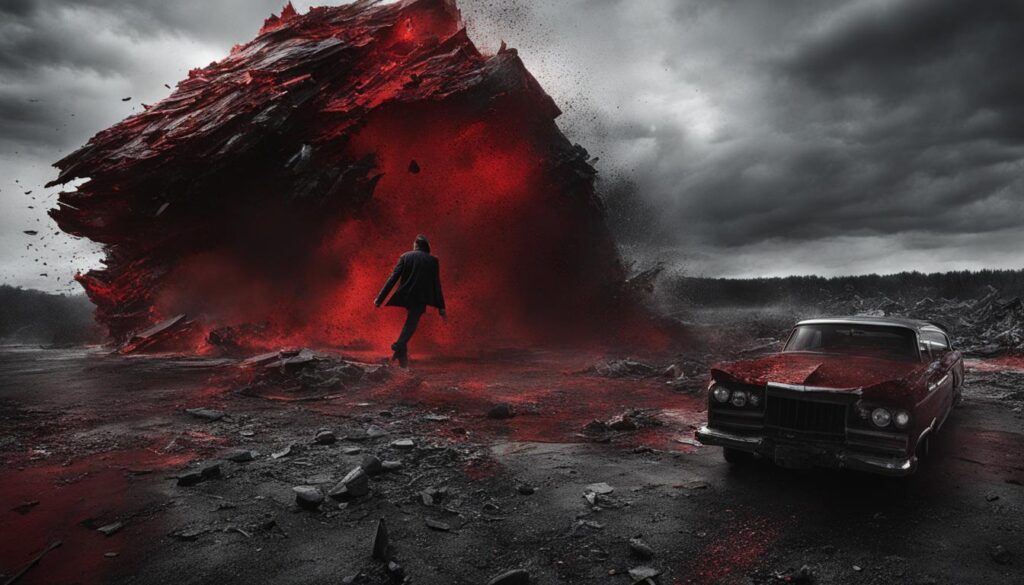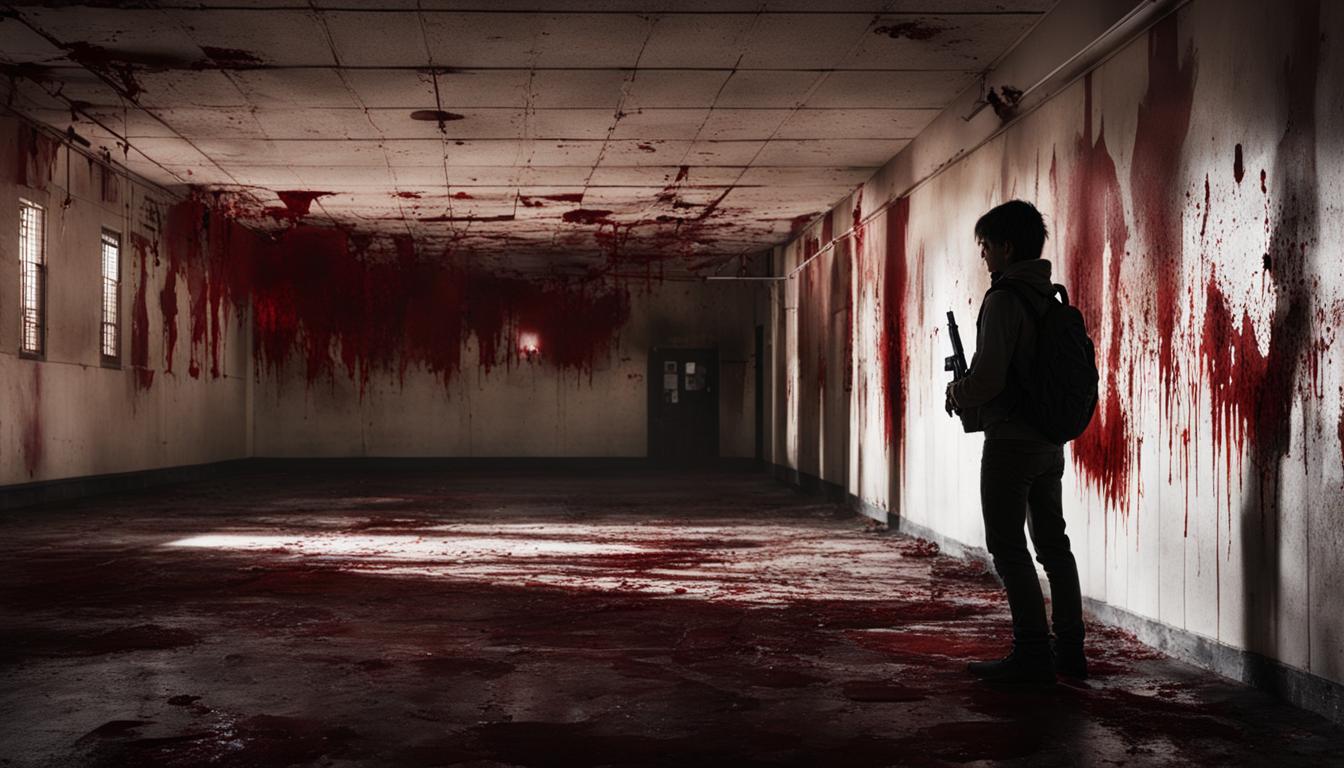Stephen King, a name synonymous with suspense, horror, and the supernatural, has penned a pantheon of literature that delves deep into the human psyche. Among his notable works, a particular stand-out is the high school violence novel ‘Rage’. This psychological thriller strays from King’s usual dalliance with the otherworldly, choosing instead to navigate the dark corridors of a realistic, yet disturbing, educational institution setting. As a reflection of adolescent rebellion and the consequences of psychological distress, ‘Rage’ occupies a unique space in out-of-print literature, having been self-removed from publication. This rare decision adds to its status as one of the time’s most controversial and significant banned books, prompting serious discussions about mental health and the potential for violence in schools.
We invite readers and Stephen King aficionados to take a closer look at ‘Rage’, to dissect its themes, character development, and narrative impact. As we delve into this high-stakes exploration, we illuminate the stark realities that fiction can sometimes cast on our society, challenging us to confront issues that are too often left in the shadows.
The Controversial History of ‘Rage’
Among controversial novels, Stephen King’s ‘Rage’, a school shooting literature hallmark, stands out for its stark portrayal of high school violence. Denoted as one of the most contentious Stephen King Bachman books, the novel’s journey from publication to withdrawal reveals much about the cultural impact of literature.
The Initial Publication and Response
Originally released under the pseudonym Richard Bachman in 1977, ‘Rage’ quickly garnered attention for its grim narrative. Despite its initial reception as an intense reflection of adolescent fury, the book’s true authorship was a concealed mystery that later unfolded to reveal Stephen King’s hand, leading to increased scrutiny and ‘Rage’ reception debates.
The Book’s Withdrawal from Publication
The choice to withdraw ‘Rage’ from publication was not a result of dwindling sales but a conscientious decision by King himself. Post-tragic real-life school shootings, King revisited the themes of his work, questioning the influence his writing may have on susceptible minds, marking a pivotal moment in the conversation about the responsibilities of an author to their audience.
Controversy and Its Influence on Pop Culture
The tumultuous journey of ‘Rage’ did not end with its removal from bookshelves. Instead, it ignited further discussions about the cultural implications of narrative content, especially as they pertain to violence in society. Its controversial nature seeped into pop culture, establishing the novel as a reference point in dialogues surrounding the power of the written word and its real-life ramifications.
Stephen King as Richard Bachman: The Pseudonym Explained
The literary world was taken by surprise when it was revealed that Stephen King, the maestro of horror and suspense, had cloaked himself in authorial anonymity to publish under the pseudonym Richard Bachman. This move was more than just an experiment in branding; it was a clever literary strategy that allowed King to explore his writing’s intrinsic appeal, independent of his established reputation.
King’s creation of Richard Bachman was a multifaceted venture, initiated to test how his works would be received without his famous name on the cover. The Richard Bachman pseudonym served as an incognito platform for King to release his narratives, granting him the freedom to genre-hop and publish more frequently than conventional publishing standards might allow.
The publishing industry’s reaction to the Bachman books offers a stark contrast to those released under King’s own name. Initially, Bachman’s novels garnered modest sales and received little fanfare, emphasizing the marketing muscle behind a well-known name. However, the quality inherent in the works eventually caught attention, leading astute readers to draw parallels between the styles of Bachman and King, igniting rumors about the true identity of the author.
The revelation of Stephen King’s alter ego was eventual and inevitable, highlighting the public and industry’s fascination with authorship and celebrity. Despite the discovery, the Bachman books remain an integral part of King’s oeuvre, symbolizing his depth and versatility as a writer. Below is a comparative look at the reception of Bachman’s works before and after the unmasking of King’s pseudonym:
| Title | Initial Reception (as Bachman) | Post-Revelation Reception (as King) |
|---|---|---|
| Thinner | Moderate success, positive reviews for gritty storytelling | Increase in sales, recognized as a classic King horror novel |
| The Running Man | Cult following, appreciated for dystopian vision | Widespread popularity, discussions on prescience of social commentary |
| Rage | Relatively obscure, known among hardcore fans | Renewed interest, though eventually allowed to go out of print due to sensitive content |
The use of a pseudonym by an author of King’s stature serves as a valuable case study in literary strategy and the dynamics of the publishing industry. Stephen King’s foray into authorial anonymity underlines the predicament of creative expression versus consumer expectation, embedding the Richard Bachman pseudonym into the annals of literary history.

Analyzing the Protagonist: Charlie Decker’s Psyche
Within the realm of thriller fiction, the creation and exploration of a character’s psychological depths are crucial in driving the narrative’s intensity. Conducting a literary character analysis of Charlie Decker offers insight into the intricate psychological profile that underpins his actions and the fictional portrayal of teen violence that is pivotal to the story’s impact.
Character Study: A Look Inside Charlie’s Mind
Charlie Decker represents a complex interplay of characteristics and mechanisms that propel him through a harrowing descent into violence. A detailed examination of his actions, dialogue, and interpersonal relationships reveals the layers of his character development in thriller fiction. By delving into his motivations and dissecting his behavioral patterns, a comprehensive picture emerges that aids readers in understanding his psyche.
The Intersection of Violence and Youth
The portrayal of Charlie Decker stands as a reflection on broader societal concerns. It prompts an examination of how youth violence is depicted through fictional narratives. This analysis not only dissects a single character’s development but also casts a wider lens on how such portrayals can mirror and influence real-world perceptions of teenage psychology.
| Aspect of Character | Description | Impact on Narrative |
|---|---|---|
| Personality Traits | Alienation, defiance, a propensity towards anger. | Shapes the novel’s tension and authentic portrayal of the protagonist’s internal struggle. |
| Motivations | A desire to be understood and to assert control over a life filled with frustration. | Drives the action forward and sets the stage for the novel’s climax. |
| Descent into Violence | Begins with internal conflict, escalating to outward expressions of violence. | Serves as a mechanism for exploring themes of adolescent rebellion and societal limitations. |
| Psychological Impact | The complex interweaving of thought and feeling that leads to critical decision points. | Delivers a profound understanding of character behavior, enriching reader engagement. |
‘Rage’ by Stephen King: The Narrative Structure
Stephen King’s ‘Rage’ employs a myriad of narrative analysis strategies to create a compelling psychological thriller. The novel’s backbone lies in the expert use of first-person narration, a technique which allows readers to immerse themselves directly into the mind of protagonist Charlie Decker. This personal perspective is crucial for effective storytelling techniques, as it establishes a connection between the protagonist and the reader that is intimate and revealing.
In terms of story pacing, ‘Rage’ follows an intricate tempo that ebbs and flows with the mental state of the main character. King strategically positions key plot points to maintain suspense while also providing enough room for character development. As a consequence, the reader experiences a sense of urgency and anticipation, a storytelling technique that King has mastered over the years. This pacing is central to the novel’s success, especially concerning the plot development that unveils the nuanced layers of the troubled mind of Charlie Decker.
- Analysis of King’s narrative strategies in establishing psychological depth.
- Assessment of the first-person perspective impact on character connection.
- Evaluation of sequence timing and its role in the psychological thriller genre.
King’s narrative expertise shines through his narrative analysis, particularly in how he unravels the plot to maximize psychological impact. The structured build-up to climactic events highlights his adept manipulation of tension and release, a storytelling technique vital for the thriller genre. This intentional structuring is a testament to King’s talent in crafting stories that are not only engaging but also thought-provoking in their portrayal of disturbed characters.
The Themes of Isolation and Alienation in ‘Rage’
The pervasive themes of isolation and alienation are intricately woven throughout Stephen King’s controversial novel ‘Rage.’ This literary work, while a departure from King’s customary forays into the paranormal, presents a chilling portrait of a teenager’s descent into violence set against the backdrop of a high school. Through the examination of these themes, ‘Rage’ contributes to a broader discourse on teenage psychology in fiction and the reflection of high school settings in literature.
Connection with Other King Works on High School Isolation
Stephen King has adeptly captured various dimensions of high school life’s complexities, often highlighting the overarching sense of seclusion that can plague the teenage experience. ‘Rage’ finds its counterparts in King’s works like ‘Carrie’ and ‘The Body,’ where protagonists grapple with the maelstrom of adolescence, seclusion, and the desire to be understood within the confines of high school society.
Social Commentary on Teenage Angst
The portrayal of Charlie Decker in ‘Rage’ is replete with social commentary on the pervasive feelings of angst that can accompany the standard rigors of adolescence. Through Charlie’s interactions and internal monologue, King casts a revealing light on how bullying, academic pressures, and societal expectations can become crucibles fostering intense feelings of alienation and, in extreme cases, tragic repercussions.
- The intense focus on the personal disconnection Charlie feels from those around him mirrors acute realities faced by many teenagers, making ‘Rage’ a touchstone in literature on alienation.
- King’s narrative serves as a stark reminder of the profound psychological impact that isolation can have during the formative high school years, illustrated by Charlie’s drastic actions and deteriorating mental state.
- The book’s scrutiny of societal norms and their role in exacerbating the plight of isolated teens offers a poignant exploration of teenage psychology in fiction.
The dissection of these themes underscores ‘Rage’s role not only as a work of fiction but also as a profound statement on the often silent battles that are waged in the hallways and classrooms of high schools everywhere.
Reader Reception and Critique of ‘Rage’
Upon its release, Stephen King’s ‘Rage’ incited a range of responses, delving into the complex relationship between fiction and real-world violence. The reader responses to ‘Rage’ showcased a spectrum of emotions, from captivation to controversy. Literary criticism has long debated the novel’s merits, sometimes scrutinizing King’s approach to controversial fiction reception.
Public and Critical Reaction to the Novel
Initial reactions to ‘Rage’ were overshadowed by its association with actual high school incidents, prompting a multitude of Stephen King book reviews that fluctuated between acclaim for its raw portrayal of teenage frustration and alarm due to its graphic content. Scholars and critics have dissected the narrative, with some applauding King’s unflinching look into a disturbed psyche, while others question the potential impact of such literature on impressionable minds.

Despite King’s decision to let the book fall out of print, discussions around it have not waned, illustrating the enduring intrigue and discomfort it generates. Reader responses ranged from empathetic to critical, with some arguing that ‘Rage’, despite its fictional nature, could potentially echo in unfortunate realities.
Comparative Analysis with Other King Novels
When pitted against King’s repertoire, ‘Rage’ is often seen as an outlier. Its lack of supernatural elements sets it apart from bestsellers like ‘Carrie’ or ‘IT’, yet the psychological depth of Charlie Decker is reminiscent of the nuanced characters found throughout King’s works. The controversial fiction reception of ‘Rage’ emphasizes its uniqueness in King’s anthology, with literary criticism highlighting the novel’s exploration of alienation and violence among youth.
Many King enthusiasts and literary critics have delved into the author’s treatment of similar themes across his novels, fostering scholarly discussions and book reviews that underline King’s versatility and engagement with societal issues. Even among his ‘Bachman books’, ‘Rage’ remains a significant point of reference for its audacious narrative and the fervent debates it continues to provoke in the realm of contemporary fiction.
‘Rage’: Impact on Literature and Censorship Debates
The novel ‘Rage’ by Stephen King has undeniably left an indelible mark in the realms of literature, stirring considerable debates on censorship in literature, the extent of literary influence, and discussions around book banning. It has brought to the fore pertinent questions about the freedom of speech in publishing and the balancing act between artistic expression and public concern. King’s decision to halt its publication sparks a complex dialogue about authorial responsibility and the power dynamics in literature.
- Instances of Debate: ‘Rage’ has been repeatedly cited in the context of sensitive societal issues, directly engaging with the ever-present tension between creative liberty and ethical considerations.
- Censorship and Power: The dynamics of censorship touch upon the delicate thresholds of acceptability in public narratives and the potential consequences of literary works.
- Dialogues on Freedom: The discussions that ‘Rage’ has instigated around book banning are instrumental in shaping policies and philosophies concerning freedom of speech in the publishing industry.
- Impact on the Literary Community: Controversies like those surrounding ‘Rage’ serve as a crucible for testing the solidarity, values, and adaptability of the literary community.
- Perceptions of Authorial Duties: The author’s preemptive self-censorship has provoked introspection within the writer’s community regarding the consequences that their works can engender in society.
Through ‘Rage’, King inadvertently foments a discussion cascade that traverses ethical boundaries and the societal implications of literary expression. The novel’s trajectory in the market and its consequent voluntary suppression by the author contribute a unique case study to the literature-censorship narrative.
Conclusion
As we culminate our exploration into ‘Rage’ by Stephen King, we recognize the unique position it holds within the renowned author’s collection. Known for his profound influence on the horror genre, King seamlessly integrates psychological depth into his narratives, and ‘Rage’ represents a distinctive sojourn into the complexities of the adolescent psyche. It showcases Stephen King’s legacy not only as a master of supernatural fiction but also as a commentator on the darker recesses of human nature. This deeper dive has allowed us to understand the interplay between a troubled mind and societal undercurrents within the framework of a psychological novel.
Understanding ‘Rage’ in the Context of Stephen King’s Oeuvre
Within the expansive oeuvre of Stephen King, ‘Rage’ emerges as a salient reflection on youth and violence, diverging from his quintessential themes of horror to engage with visceral human experiences. A reflection on ‘Rage’ impels us to consider its disparate yet integral contribution to King’s career. This novel, banned and currently out of print, contributes to an understanding of King’s versatility as an author who dares to dissect the turbulent emotions of his characters, weaving a narrative that is as compelling as it is confrontational.
Concluding Thoughts on ‘Rage’ and Its Place in Modern Fiction
The influence of ‘Rage’ persists in modern fiction analysis, fostering debates that extend beyond the confines of its pages. Its unflinching portrayal of a high school student’s descent into violence compels a reflection on the responsibility of literature in society’s portrayal of such themes. In today’s landscape, the pertinence of its themes—alienation, rebellion, and the quest for identity—are echoed in contemporary discussions surrounding mental health and societal pressures on youth. The narrative maintains its grip on the reader’s imagination, demanding a contemplative look at the power of storytelling and its enduring impact on collective consciousness.



